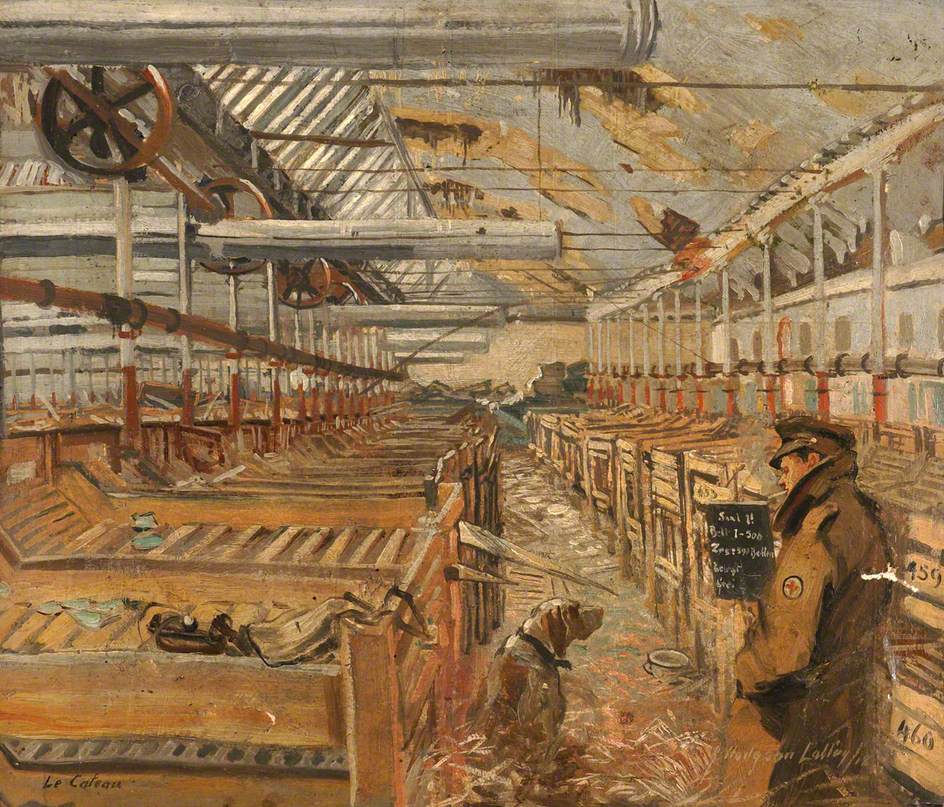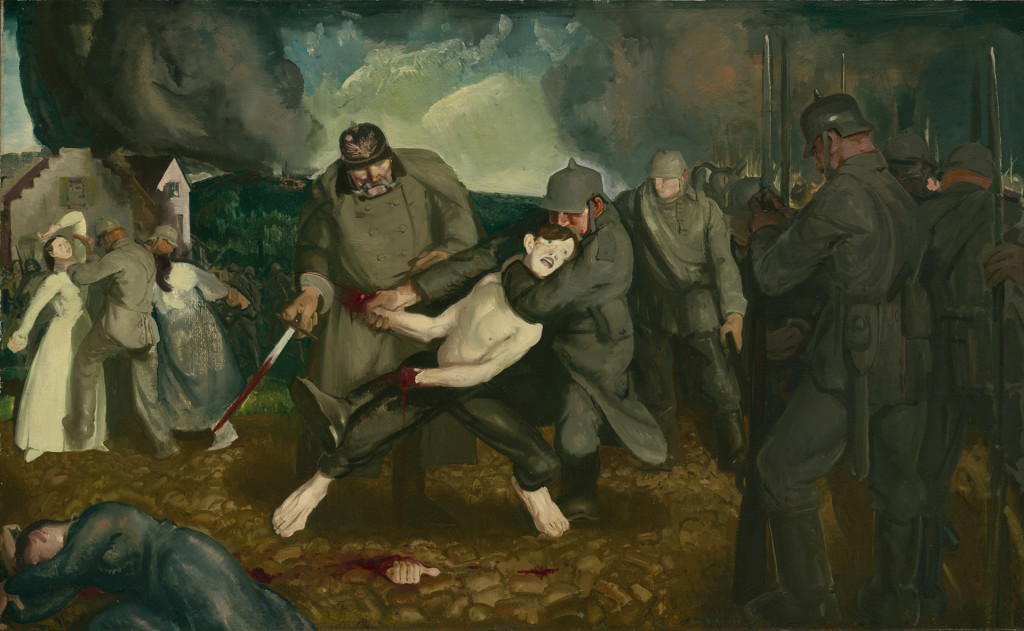With a little patience, Germany might have had it all. But Wilhelm II was shrewd, treacherous, and hysterical, the archetype of the chronic bully whose mother had never loved him. He had a habitual style of discourse which in effect, was the neurotic bluster of a small man who had the bad luck to stomp about in a giant’s boots, those of his grandfather Wilhelm I. Wilhelm II wanted to make the world stand in awe of him, but he did not know, precisely, how to go about it.
Wilhelm’s personal anxiety merely expressed in microcosm the larger German anxiety about the nation’s place in the world. There was indeed something very strange, obscure, creepy and weird lying beneath the stolid prosperity of the Hohenzollern Age- a surfeit with peace, a lust for violence, a belief in death, and the cult of the ominous mystique of war.

—First World War: An Abandoned Dormitory for German Troops in a Requisitioned Lace Factory at Le Cateau
by John Hodgson Lobley
Wellcome Library
Date painted: 1918
Oil on board , 43 x 51.5 cm
“Without war, the world would quickly sink into materialism,” the elder Von Moltke, chief of the German General Staff, had proclaimed in 1880; and he, his nephew the younger Von Moltke, and the caste of German militarists they represented could presumably save the world from that tawdry fate. But this belief in war was hardly a monopoly of the right infecting even that spokesman for German humanism, Thomas Mann, who asked, in 1914, “Is not war a purification, a liberation, an enormous hope?” And if that dosage of late romanticism was not enough, he added complacently, “Is not peace an element in civil corruption?” One has to wonder if there are mutant strains intrinsic to Christianity to produce such a universal ideology of the obscure in the secular plane.
It seemed there had been peace in the world for too long. From Berlin, in the spring of 1914, Colonel House wrote to Woodrow Wilson, “The whole of Germany is charged with electricity. Everybody’s nerves are tense. It only requires a spark to set the whole thing off.” A common refrain was, “Better a horrible ending than a horror without end.” The demons that sabre rattled of the morbidity of the Thirty Years War were back and biting the soft rumps following the path of least resistance.
But in expressing this spirit of violence and disorientation, Germany was merely precocious. They were expressing a universal European malaise. Modernism was knocking at the door of middle-class bourgeois values and conventions. ( to be continued)…
ADDENDUM:
(see link at end)…So what is one to make of all this? Many themes emerge here: on one hand, the tortured lives of combat survivors, conflicting views about war neurosis as evidenced by these disabled veterans and their supporters, and on the other hand those views held by conservative psychiatrists, the military, and other celebrants of the comradeship and the “manliness” of trench warriors.
Those romanticizing war in the trenches readily subscribed to the notion that in 1918 a nation of heroes had been undone by Jews and Communists on the home front and sadly diminished afterwards by “whiners” and “grumblers” seeking remuneration for their wartime trauma. As Crouthamel put it: Depending on politics and experience, war neurotics were seen alternately as empathetic victims of total war’s extr
brutality or symptoms of psychological weakness that led to the nation’s collapse.Such differing recollections of warfare—horrors, heroism, comradery—led each side to invent its own memory of what had transpired during the war and in the autumn of 1918.
Although the Nazis were initially thought to be sympathetic to traumatized veterans (after all, Hitler had been one of them), they were not. As Crouthamel observes , just before World War II the Nazis resorted to a program of “euthanasia,” which targeted mentally and physically impaired. The author suggests that some grumblers and whiners from the earlier war were among its victims.Read More:http://muse.jhu.edu/login?auth=0&type=summary&url=/journals/journal_of_social_history/v045/45.4.schmidt.html






 COMMENTS
COMMENTS